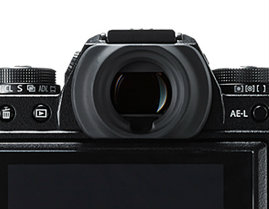 Camera technology is, by it’s very nature, in a constant state of flux. Manufacturers are locked in a never ending battle of one-upmanship as they try to outdo each other in bringing new and innovative ideas to the marketplace. It’s great fun for reviewers who are fortunate enough to get the opportunity to try out new models with no commitment, but for the average consumer it can be a bit head-spinning.
Camera technology is, by it’s very nature, in a constant state of flux. Manufacturers are locked in a never ending battle of one-upmanship as they try to outdo each other in bringing new and innovative ideas to the marketplace. It’s great fun for reviewers who are fortunate enough to get the opportunity to try out new models with no commitment, but for the average consumer it can be a bit head-spinning.
So today I’m going to take a look at some of the latest camera features and technologies, so that when you go into your local Best Buy store to buy your next camera you’ll have a headstart on the store clerk, and maybe even a shopping list of must-have features.
Face Recognition
This is kind of self explanatory; lots of cameras nowadays will recognise when a face is in the frame and adjust the settings accordingly to make sure the face is in focus and correctly exposed. Some will even recognise that it’s a group shot with multiple faces. The Sony DSC-H300 that I reviewed recently took this idea one step further by adding a smile recognition mode, which actually activates the shutter when the person in the frame smiles! A handy feature when you’re photographing infants and toddlers.
 Wireless Sharing
Wireless Sharing
The ability to instantly share photos is something smart phone users take for granted. The social media giant that is Instagram was built around it’s users ability to upload images instantaneously. (Don’t even ask me about SnapChat – I think I’m over the hill, social media-wise!). Now wireless capabilities are gradually becoming a standard feature of digital cameras. I wrote an overview of the Samsung NX30 (pictured) recently, which looks to be offering some of the most advanced sharing features in the mirrorless category. The NX30 allows you to share images on Facebook, YouTube and Flickr, and back up your images straight to Dropbox. You can even share images with up to four nearby devices simultaneously.
Samsung has a bit of history in this department; the Galaxy camera actually has the Android operating system onboard, which means you can install your favourite photo sharing apps and upload straight from the camera.
Another interesting feature of the NX30 is the baby monitor mode, which will send a photo of your child to your smart phone every time she makes a sound.
 Electronic Viewfinder
Electronic Viewfinder
When mirrorless cameras first burst onto the scene a few years back, one of the major drawbacks for the photography purists was that they lacked a ‘through the lens’ viewfinder, like you find on a DSLR for example. Nowadays there are lots of mirrorless cameras that have an electronic viewfinder (EVF), which is essentially houses a tiny LCD screen. One of the downsides of an EVF is that it suffers from lag, whereby there is a delay between what is happening in front of the lens and you seeing it on that little screen. Manufacturers have worked hard to minimise this lag however, and in my experience is that it is barely noticeable on the latest models.
The major advantage of the EVF, and really I consider this to be one of the nails in the coffin of the DSLR, is that most (and this is worth confirming before you purchase) actually show you a preview of the final image, instead of just a view of the scene in front of you, as a DSLR does. This means you will know before you take the shot whether your exposure is off, and you are about to under or overexpose the image.
There is actually one DSLR on the market already that has an EVF; the Sony A58 that I last year.
Focus Peaking
Most of the latest mirrorless cameras come with focus peaking (not ‘peeking’ mind you). This is a feature designed to help you manually focus your lens. Now you might wonder why in this day and age you would ever want to use manual focus instead of autofocus. Well, a lot of cameras still struggle to find accurate focus in low light situations. And depending on the composition of your shot, you may not want to use the available focus points. So focusing manually is definitely something you’ll want to master. Focus peaking is basically an effect that is added to the image you see through the EVF or on the cameras LCD screen which lets you know which area of the image is in focus. On the Fujifilm X-A1 focus peaking makes the in-focus area look kind of over-sharp. Other models add coloured outlines to the in-focus area.
It’s worth mentioning that some cameras will allow you to override the autofocus, so you can first attempt to autofocus, and then tweak the focus manually. Some models, however, force you to choose either autofocus or manual focus, and it’s worth looking into before you commit to a purchase.
In-camera Editing
I’m a product of the digital era – I love the instant feedback that digital photography provides.
I love to review images on the back of my camera if I find myself with a bit of downtime before I have the chance to download them to my computer. And nowadays lots of models provide you with features for post-processing your images right there on the camera. Maybe this speaks to the success of Instagram, where you can add cool filters and effects to your images and get some really impressive results.
The Sony DSC-H300, for example, actually allows you to do some skin smoothing right there on the camera! In the future I expect to see cameras taking greater advantage of touch screens to allow you to even more in-depth, Photoshop-type retouching. I guess if you’re using the Samsung Galaxy camera that I mentioned earlier, you already have the capability to do exactly that!
So there’s a brief overview of some of the latest camera features, that I’m excited by. Is there anything you’ve seen lately that’s impressed you? I’d love to hear about it in the comments below.



